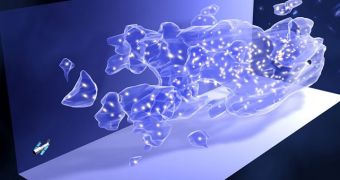While working on the Theory of General Relativity, Einstein was trying to come up with an equation of the static universe, which required a cosmological constant to balance the effect of gravity so the matter in the universe would not collapse to a big crunch, but would rather remain in general configuration seen today. In 1929, the famous astronomer Edwin Hubble discovered that the universe was not static after all, but it presented a motion of inflation that has a speed which accelerates exponentially.
When Einstein heard about Hubble's discovery, he scrapped his work related to the static universe and self-proclaimed himself the "biggest blunder". However, Einstein's prediction about the cosmological constant that would be the opposite of gravity might not have been wrong.
This possibility was examined by two teams of scientists from Texas A&M University, in a project that began five years ago and is supposed to end next month. The research was conducted on over 200 supernovae by using the 4-meter telescope in Chile, during the October to December period of each year, the optimal moment to discover the supernovae.
The discovery made by the scientists at Texas A&M, in 1998, that suggested that the universe is expanding at faster and faster speeds, needed to be explained through some kind of force that was acting against gravity. They called it dark energy and it is believed that dark energy is responsible for 74 percent of the universe, another 22 percent represents dark matter and the remaining 4 percent ordinary matter.
The ESSENCE team studied types of supernovae that have about the same energy and brightness. By calculating the redshift in the light emitted by the supernovae, researchers have been able to determine the rate, the acceleration of the expansion and the distance which the supernova is situated at. The exponential acceleration of the speed which the universe is expanding at is thought to be generated by the dark matter.
The parameter used by Einstein to describe the force opposite to the gravitational force is called the w-parameter and represents the density of dark energy in the universe, which must be close to -1, the same as the results obtained by the ESSENCE team that seem to confirm Einstein's prediction. Nevertheless, the final results of the research will be published next year and the measurements suggest a value around -1 plus or minus 10 percent error.
So far though, the dark matter or the dark energy has not been directly observed, or proven to exist, but the effect is clearly visible thus there must be an alternative explanation. Since dark energy cannot be measured in laboratory conditions, physicists supporting the string theory suggest that it might be a manifestation of the 5th spacial dimension, or a vacuum energy density, that is slowly changing in time.

 14 DAY TRIAL //
14 DAY TRIAL //